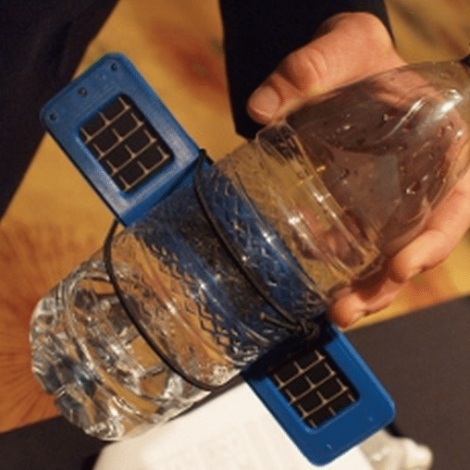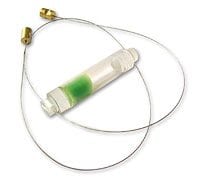Globally, diarrhea is a huge killer, taking 1.8 million lives each year. Most of its victims are children under age 5, WHO reports, and the source is often bad water. Water filtration chlorination and boiling are all good solutions. But, in an emergency, and in places where other materials may not be available, the only thing that’s needed to disinfect water is a clear bottle and sunlight. Left in the sun for about six hours, a combination of heat and UV rays kill the disease-causing microbes in the water. We’ve written about the promise of solar disinfection before.
[quote author=”Charlie Matlack, a student at the University of Washington.”]”The challenge with the solar disinfection method is that people don’t trust it because they can’t see it taking place.”[/quote]
To solve the problem, Matlock and a team at the university built an solar water disinfection indicator that attaches to bottles and lets people know when the water is safe to drink. The device senses ambient sunlight with a photovoltaic panel behind the bottle. Two other PV panels jut out from the bottle like wings to power the sensor. Because of its position behind the bottle, the device can account for decreased sunlight through scratched and colored bottles and muddy water. While the water is disinfecting, the device shows a yellow light. When the green light switches on, the water is ready to drink.
With a sleek look and slick functionality, we were worried about its cost. It turns out, however, that at a projected volume of 100,000 manufactured, the sensors may only cost about $5 each.
“We wanted to focus on the absolute lowest cost household solution,” Matlack says. To take it to market, Matlack formed the non-profit PotaVida. For more information, please see PotaVida.com.

